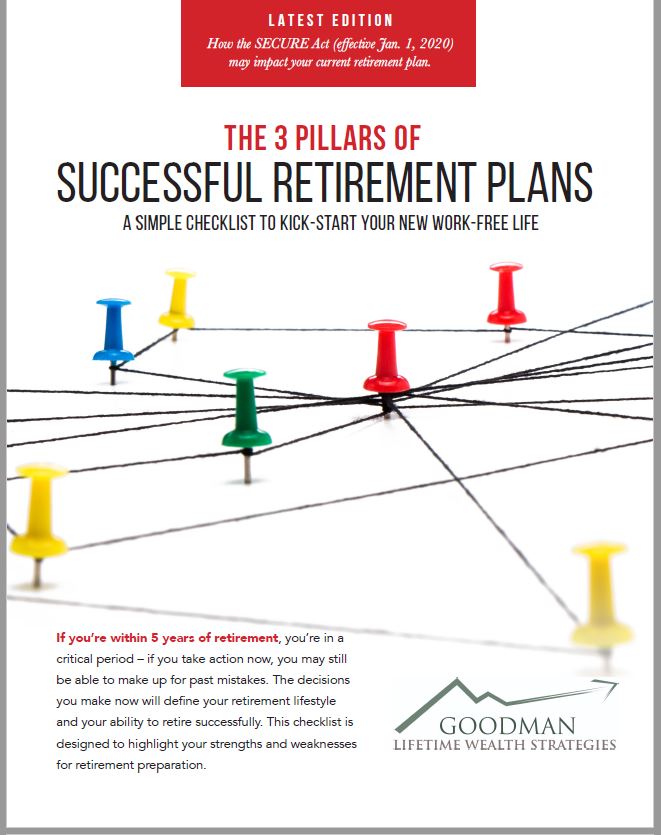In my opinion many companies provide their employees with a wide array of options to utilize in saving for and having a financially secure retirement!
In recent years I have worked with multiple employees of a particular company in a comprehensive retirement planning fashion. Through that I have become familiar with their benefits and am going to highlight a few key areas that may apply to employees of other companies too.
First, common questions individuals have is “What should I do?” and “Am I invested appropriately?”
The answer to those and many other financial planning and investment management questions is “It depends”.
What does it depend on? Let’s take a look at some common scenarios.
If you are an employee with a substantial amount of your financial resources in the 401K plan, these are some details to be aware of:
#1 Your 401K plan, if you are not at least contributing up to your company match, you should have a compelling reason as to why you are not, or not doing so is simply missing out on one of your most attractive and simple building your retirement savings opportunities. The plan provides many investment options that are stock or bond based, with some international focused options.
It is important to note, like many 401K plans, annuity options are currently not available within the 401K plan, and if an annuity either for future lifetime income or for principal protection with index linked growth potential is desired, those factors would lean toward the individual wanting at least some $’s out of the 401K into an IRA, when it is feasible for them to do so.
#2 There may be a self-directed brokerage option which if you are a hands-on investor you may want to take advantage of, at a minimum you should be aware of it.
#3 Age 59 ½ is a key milestone, even if still working, you now have access to complete a tax free rollover of some of your 401K savings into an IRA. The main reason to do this is if one wanted their $’s in financial options that aren’t available within the 401K plan, and/or the individual desired an advisor to manage their retirement savings/investments. In some situations, there may be options to have professional help with managing your 401k savings while in the plan, but for the most part it is the responsibility of the plan participant to decide how their 401k money will be invested, as well as if, when and how changes will be made to the investments.
Many 401K plans do allow partial rollovers for employees once they reach age 59 ½.
If you retire or leave the company prior to age 59 ½ you have the option to rollover your entire balance, and in most cases, unless you are an extremely knowledgeable do it yourself investor, should talk to a financial advisor to discuss your personal situation and determine the option that is best for you. Rollover decisions are often not reversible and if not handled properly can have unintended and often negative tax consequences.
#4 Pension – If you have pensions benefits, once you do retire, or in some situations separate from service you will be asked to make a permanent selection. Two decisions if you are married.
The first thing all plan participants with a pension should be aware of is a lump sum payout option rather than receiving monthly income for the rest of your life.
The lump sum may be a more attractive option for individuals that want flexibility and control. Also if they are comfortable managing the lump sum, aren’t reliant on the monthly income, and/or have health concerns, those factors often support a decision to take a lump sum pension payout.
For those who are in good health and need the monthly income stream to support their ideal retirement lifestyle, typically the non-lump sum option will be best.
For married individuals the 2nd choice is deciding on the monthly income pension option, “Do you want the payment to be for the rest of your life only or for your spouse to receive a monthly income for the rest of their life too (should the plan participant predecease the spouse)?”
Most married individuals I have talked to, the instinctive option is wanting income to cover them and their spouse, which makes sense, and also means a lower monthly payment.
Depending on multiple factors it may be advantageous to select the larger monthly income amount option which wouldn’t have the benefits continue to the non-plan participant spouse.
The larger the pension benefit, as well as the younger and healthier the plan participant is are all important factors to determine if this strategy will be attractive.
Let’s assume the difference between the single life payout and the joint life payout is $600 a month.
If a specific type of life insurance policy can be put in place for less than $600 a month, many people find the lifetime higher pension payout with the life insurance protection for their spouse, as a more attractive overall strategy.
Even more so if the insurance policy can provide benefits in a long term care situation or in some cases a policy provides benefits in 3 areas, tax deferred cash value growth protected from stock market declines with the death benefit coverage and chronic illness rider.
Some employees may also participate in a 409A or deferred compensation plan and I have advised around coordinating those benefits with other retirement income sources as well as understanding ones tax picture and how that will change during and after the deferred compensation payout periods.
These days retirement planning is complicated, options are many, and individuals often find value working with a knowledgeable, independent advisor that can advise in all 5 key areas of a comprehensive retirement plan, Investments, Income planning, Tax planning, Insurance & Estate Planning.
Not all areas may apply to you equally, but overlooking an area that does at a minimum can cause hardship or be a missed opportunity, and in a worst case become a lifetime regret.
Adam Goodman is an Independent Financial Advisor and the founder of Lifetime Wealth Strategies, www.AskAdamGoodman.com a comprehensive retirement planning firm in Las Vegas, Nevada, and has been working with clients in the Financial Services industry since 2010.
In addition to investment and insurance licenses Adam currently holds 3 financial services industry designations, the WMCP® program provides a comprehensive curriculum in investment management centered on client goals. RICP® is a designation awarded to financial advisors who complete a series of training around a variety of retirement topics related to Retirement Income Planning and other issues that are often unique to the retirement phase of life. The LACP® is a certification exemplifying excellence with Life Insurance & Annuities in the areas of:
- Product Knowledge
- Consultative Sales Process
- Ethical, Legal and Regulatory Requirements
For individuals over age 59 ½ or within 2 years of retirement with a large % of their assets inside their employer plans, Adam currently offers a 1 hour complimentary retirement planning strategy session, where we focus on understanding your goals, financial opportunities and what if any improvements you can make! Adam can be reached at info@askadamgoodman.com or 702-462-7233
Investment Advisory Services are offered through Brookstone Capital Management, LLC (BCM), a Registered Investment Advisor. Insurance and annuity products are provided separately through Adam Goodman



Leave a Reply